Description
This tutorial allows you to make a solar lamp equipped with a USB charger. It uses lithium cells that are reused from a old or damaged laptop. This system, with a day of sunlight, can fully charge a smartphone and have 4 hours of light.
Sommaire
Sommaire
[masquer]- 1 Description
- 2 Sommaire
- 3 Introduction
- 4 Video d'introduction
- 5 Étape 1 - How it works
- 6 Étape 2 - Manufacturing stages
- 7 Étape 3 - Removing the cells from the computer battery
- 8 Étape 4 - Measure voltage of cells and ther capacity
- 9 Étape 5 - Realisation of the 3 different modules
- 10 Étape 6 - Connection of the 3 modules
- 11 Étape 7 - Building the case - Version 2
- 12 Étape 8 - Intégration du circuit électronique
- 13 Étape 9 - Fixation du panneau solaire - Fermeture
- 14 Étape 10 - Building the case - Version 1
- 15 Notes et références
- 16 Commentaires
Introduction
Lithium is a natural resource whose stocks are increasingly used for electric cars, telephones, and computers. This resource is gradually being depleted over time. Its increased use in battery manufacturing is mainly due to its ability to store more energy than nickel and cadmium. The replacement of electrical and electronic equipment is accelerating and it is becoming an increasingly important source of waste. France currently produces 14kg to 24kg of electronic waste per inhabitant per year. This rate increases by about 4% per year. In 2009, only 32% of young French people aged between 18 and 34 years old, have once recycled their electronic waste. In the same year 2009, according to Eco-systèmes, from January to September 2009, 113,000 tonnes of CO2 were avoided through the recycling of 193,000 tonnes of DEEE, one of the four eco-organisations in the DEEE sector.
However, this waste has a high recycling potential. In particular, lithium present in the cells of computer batteries. When a computer battery fails, one or more cells are defective, but some remain in good condition and can be reused. From these cells it is possible to create a separate battery, which can be used to power an electric drill, recharge your phone or be connected to a solar panel to operate a lamp. By combining several cells it is also possible to form larger device storage batteries.
This technology have been documented during a stopover of the " Nomade des Mers " expedition on the island of Luzong in the northern part of Philippines. The association Liter of Light has already installed this system since 6 years in remote villages which don't have access to electricity. They also organize training for the villagers in order to teach them how to fix the solar lamp ( already 500 000 lamps installed).(Turn on subtitles for the video, you will have every details !)
Youtube
Matériaux
- Used laptop battery
- Li-ion 18600 Battery holders
- Solar panel 5V-6V / 1-3W
- Charge and discharge regulator (ex: 4-8V 1A Mini Li-ion USB Arduino Battery Charger TP4056)
- DC/DC tension converter DC/DC booster MT3608 (electrical component that will transform the 3.7 V of the batteries into 5 V)
- High power LED Lamp (ex : LED boutons 3W )
- Switch (to open the circuit and cut off the light)
- Electric tape
- Box
Outils
Cells extraction
- Gloves (to avoid cutting with the plastic of the computer battery or with the nickel ribbons that connect the cells)
- Hammer
- Chisel
- Cutting pliers
For the lamp fabrication :
- Glue gun (and glue sticks)
- Heating gun or small torch
- Wood saw
- Screw driver
Étape 1 - How it works
This tutorial shows how to recover computer cells to make a new battery. Powered by a solar panel, or by a USB port, it will allow you to light an LED lamp.
The system works around three modules:
- the energy reception module: the solar panel and its charge controller
- the energy storage module: the battery
- the module that gives back the energy: the LED lamp and its voltage regulator
Energy Receiving Module: Photovoltaic Panel & Charge Controller
The photovoltaic panel concentrates the energy of the sun. It allows to recover its energy in order to store it in the battery. But be careful, the amount of energy received by the panel is irregular depending on the time of day, the weather... it is important to install a charge/discharge regulator between the panel and the battery. This will be protected against overload, among other things.
Energy storage module: the battery
It is composed of two lithium cells recovered from a computer. To put it in a nutshell, a battery is a bit like a box containing several batteries: each of them is a cell, a unit that supplies power to the device by electrochemical reaction.
The cells found in computers are lithium cells. They all have the same capacity to store energy, but their ability to make it is different for each. To form a battery from cells it is important that they all have the same ability to deliver energy. It is therefore necessary to measure the capacity of each cell to compose homogeneous batteries.
Module that renders the energy: the LED lamp, the 5V USB port and its voltage converter
Our battery supplies us with 3.7V power and the LED lamps we used operate at the same voltage. In addition, the USB ports provide a voltage of 5V. We therefore need to transform the cell energy from 3.7V to 5V: using a voltage converter called DC/DC booster
Étape 2 - Manufacturing stages
1) Removing the cells from the computer battery
2) Measure voltage of cells
3) Realisation of the 3 modules
- solar panel + charge regulator
- battery
- LED light + charge regulator
4) Link of the 3 modules :
- solar panel + charge regulator
- the battery
- LED light + charge regulator
5) Build a box
6) Integration of modules in the box
Étape 3 - Removing the cells from the computer battery
For this part we suggest you to look at the following tutorial : Récupération de batteries
- Put on gloves to protect your hands
- Put in place the battery, and open it with a hammer and a chisel
- Isolate each cells by removing every other parts. (image 2)
Étape 4 - Measure voltage of cells and ther capacity
For this part we suggest you to look at the following tutorial : Récupération de batteries
Voltage measure:
We start by measuring the voltage of each cells in order to check if they are working properly. Every cells that have a voltage lower than 3V will not be able to be used in this project and should be recycle.
- Using a multimeter, in DC mode, measure each cells and check the one that are usable ofr the project.
Be carreful : If the computer battery seems to have liquid on the outside, do not open the box, lithium is harmful in high dose.
Measure the capacity :
To measure the capacity of a cell, we have to charge it to the maximum and then discharge it. Those cells are lithium based, and need a specific charge and discharge system, ususally the maximal charge is 4,2 V and the minimum is 3V. Going over those limits will damage the cell.
- Use a PowerBank : it will alow you to charge many cells at once with a USB port.
- Charge the cells and wait until the charge is complete (all the light should be on), it will be done in about 24 hours. (image 3)
- The cells will be charge at their maximum (4,2V), now we have to discharge them.
- You should use an Imax B6 : a tool that allow to discharge the cells and check their capacity.
- How to use the tool :
- the voltage : it will ask you which type of cells you would like to check, you should choose the lithium one. It will automatically regulate the discharge at 3V minimum.
- the intensity : set to 1A in order to have a quick and secure discharge. In this condition, the discharge should take between 1 hour and 1 hour and half.
- Connect the magnet to the crocodile clips, then connect to the cell, the magnet help to let the current pass through the Imax B6 to the cells. (image 4)
- Discharge the cells until they are completely empty.
- Note the capacity on the cell. The higher the better.
- Sort your cells by capacity : <1000 mA, between 1000-1300, 1300-1500 and >1800 mA.
Remark : It is important to do homogeneous batteries, with cells that have a similar capacity
Étape 5 - Realisation of the 3 different modules
Module 1 : Solar panel and charge regulator
- Use a black and a red wire, use a pliers to stripe the wires.
- Soldier the red wire on the positif side of the panel and the black on on the negative side.
- The charge regulator has 2 inputs : IN- and IN+ (which are indicated on the component).
- Weld the red wire (positive) with the IN+ input of the charge regulator and the black wire (negative) with the IN- input (image 5).
Module 2 : Battery
- Insert the lithium cell in the battery holder.
Module 3 : LED / USB converter
The voltage converter DC/DC has two inputs and two outputs :
Inputs : VIN + and VIN - / Outputs : OUT + and OUT -
- Take two wires (red and black).
- Weld the red wire with the VIN+ input of the voltage converter and the black wire with the VIN- input.
The LED has two input wires : one positive and one negative.
Caution: Wire polarity is not indicated on the LED. In order to identify it, use an ohmmeter. The wire is positive when it displays a null value. When it displays a higher value, the wire is negative.
- Weld the LED positive wire to the OUT+ output of the voltage converter and the LED negative wire to the OUT- output. (image 7)
Étape 6 - Connection of the 3 modules
The charge regulator has 2 inputs : IN- and IN+ (which are indicated on the component).
- Weld the red wire of the solar pannel (positive) to the IN+ input of the charge regulator and the black wire (negative) to the IN- input.
- The charge regulator has 2 inputs : B- and B+ (which are indicated on the component).
- Weld the red wire of the battery holder (positive) to the B+ input of the charge regulator and the black wire (negative) to the B- input.
- Weld the red wire (positive) of the USB/LED converter module to the OUT+ output of the charge regulator. Weld the black wire (negative) to the OUT- output. Remark : The electric circuit is now closed and the light turns on.
- Cut the positive wire connecting the regulator to the converter in order to open the circuit and weld the switch in series. It will be used to open and close the circuit.
Étape 8 - Intégration du circuit électronique
Intégration du circuit électronique :
To do that, take one of the small boards used for the mold (11/13cm) and screw all the components on it. The more symetric the layout is, the more balanced the final lamp will be (the photo shows one possible layout). Be carefull to attach properly the USB port and the switch, so that they don't move when you use them.
- Using a marker trace on the plastic envelope the position of the ON/OFF switch and of the USB plug, and drill the corresponding holes.
- Place the small board with the circuit inside of the plastic envelope and screw a big board below it (15/13cm), taking tare that the plastic tabs take place between the two boards.
Étape 9 - Fixation du panneau solaire - Fermeture
Fixation du panneau solaire :
- Place the panel on the bigger board, mark the position of the + and - outputs of the pannel and drill a hole of 5mm in both boards. (If any component is already in this place, the hole should be moved).
- Put the wires from the charge controler in this hole, and weld them to the corresponding outputs on the solar panel.
- To attach the panel, the ideal is to use a thin layer of fabric sticked to the board and to glue the panel on the fabric (using strong glue for example).
- For the lamp base, repeat the same operation at the other end of the plastic. Place the small board on the inside of the envelope and screw it to the bigger board, with the 4 plastic tabs between the two boards.
- To ensure the USB plug sealing, you can staple a small piece of bicycle innnertube.
Étape 10 -
Building the case - Version 1
Building the case - Version 1
Version 1 : Tupperware
This design originates from Open Green Energy, do not hesitate to consult the original tutorial. We are sharing it because it seems really interesting. However, the case shall be adapted to our circuit, in particular for the USB output. We will propose soon our own model inspired from this design.
Notes et références
Do not hesitate to ask any question or suggestion about this tutorial, we will open a new section to address it. If you have made the lamp, share it ! #solarlamp #lowtechlab
Published
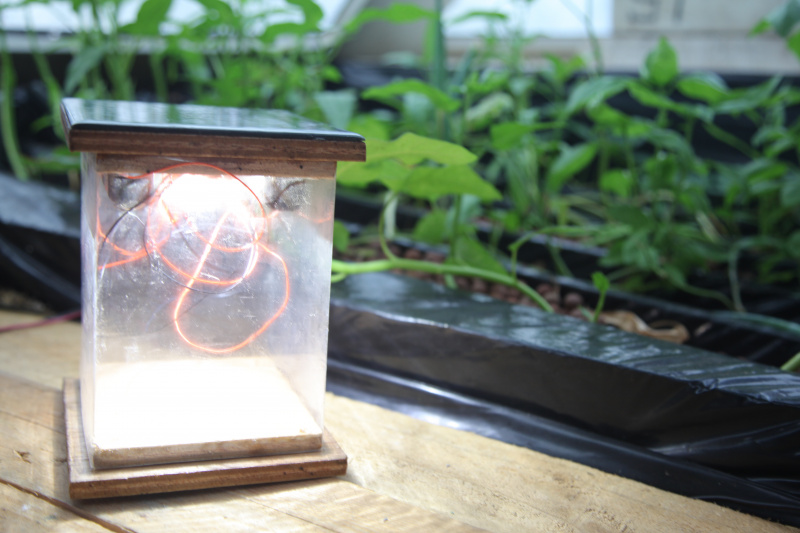
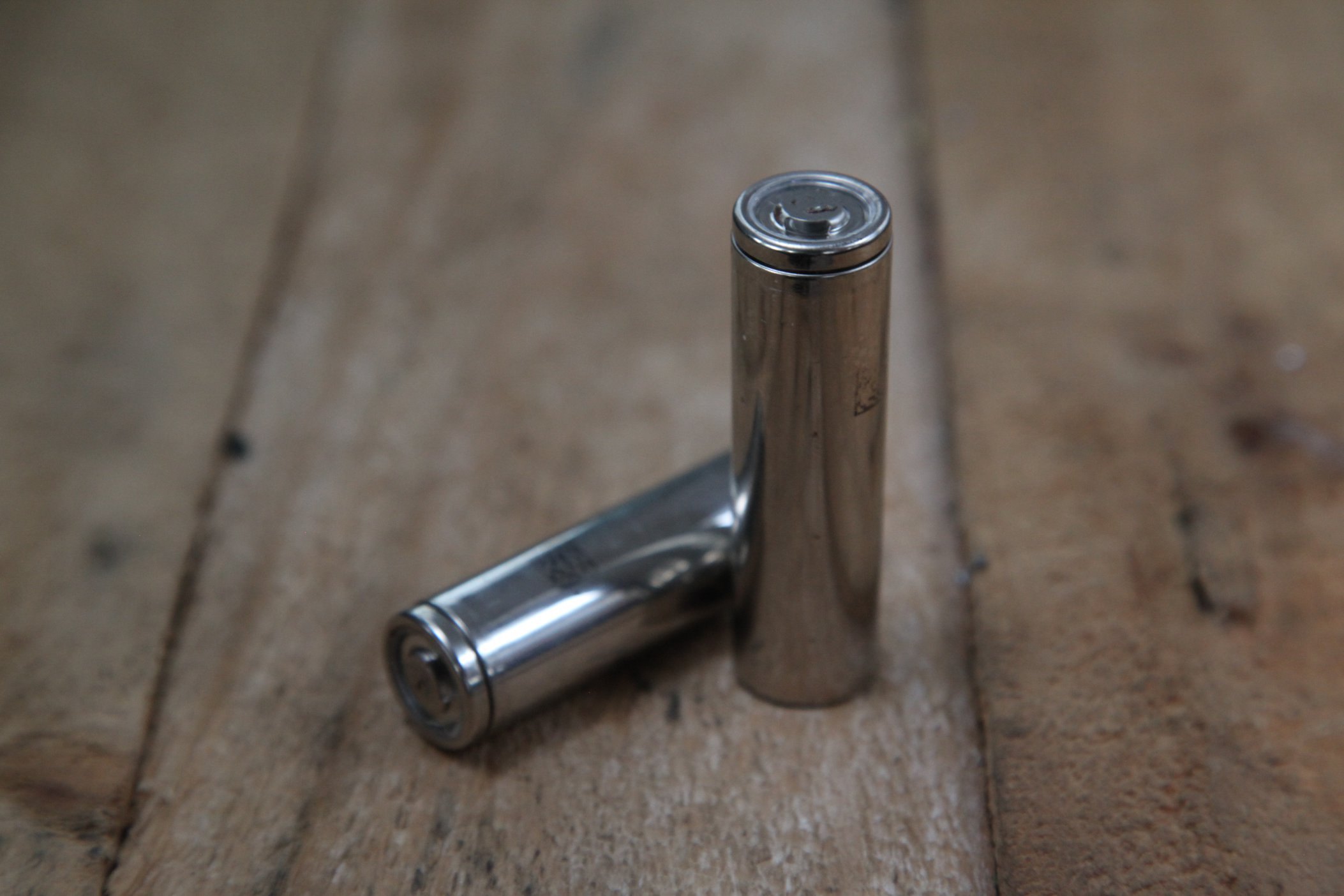
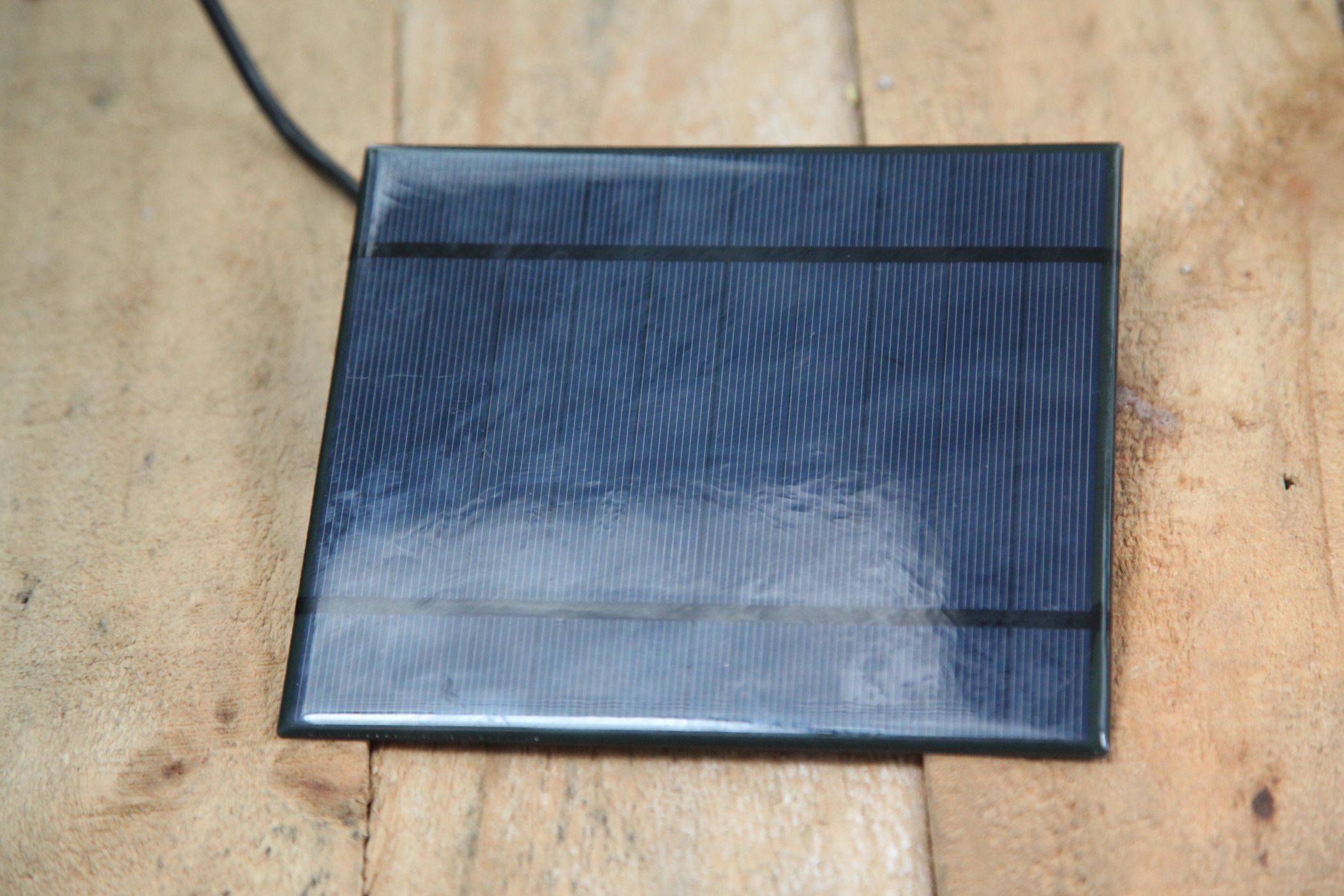
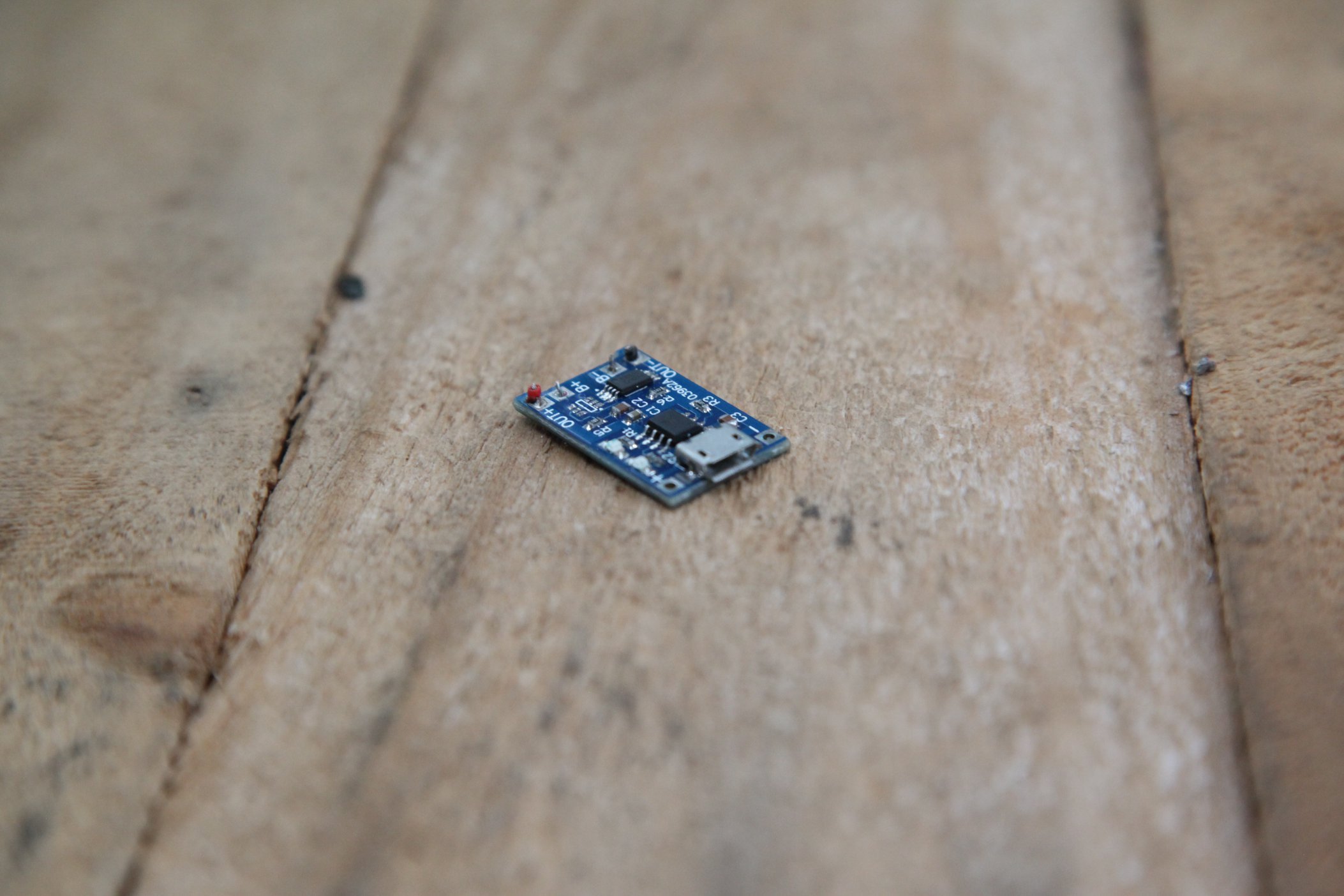
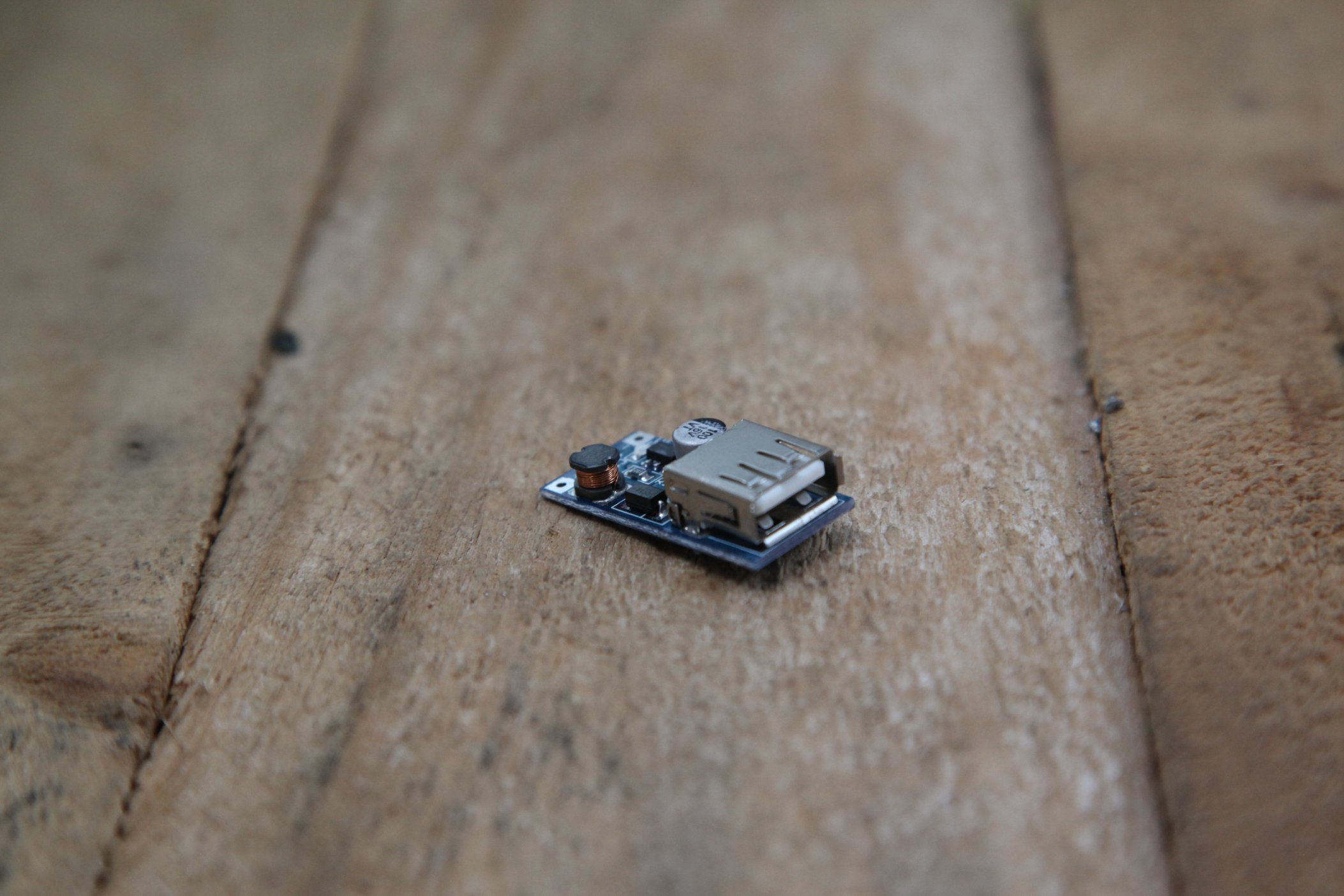
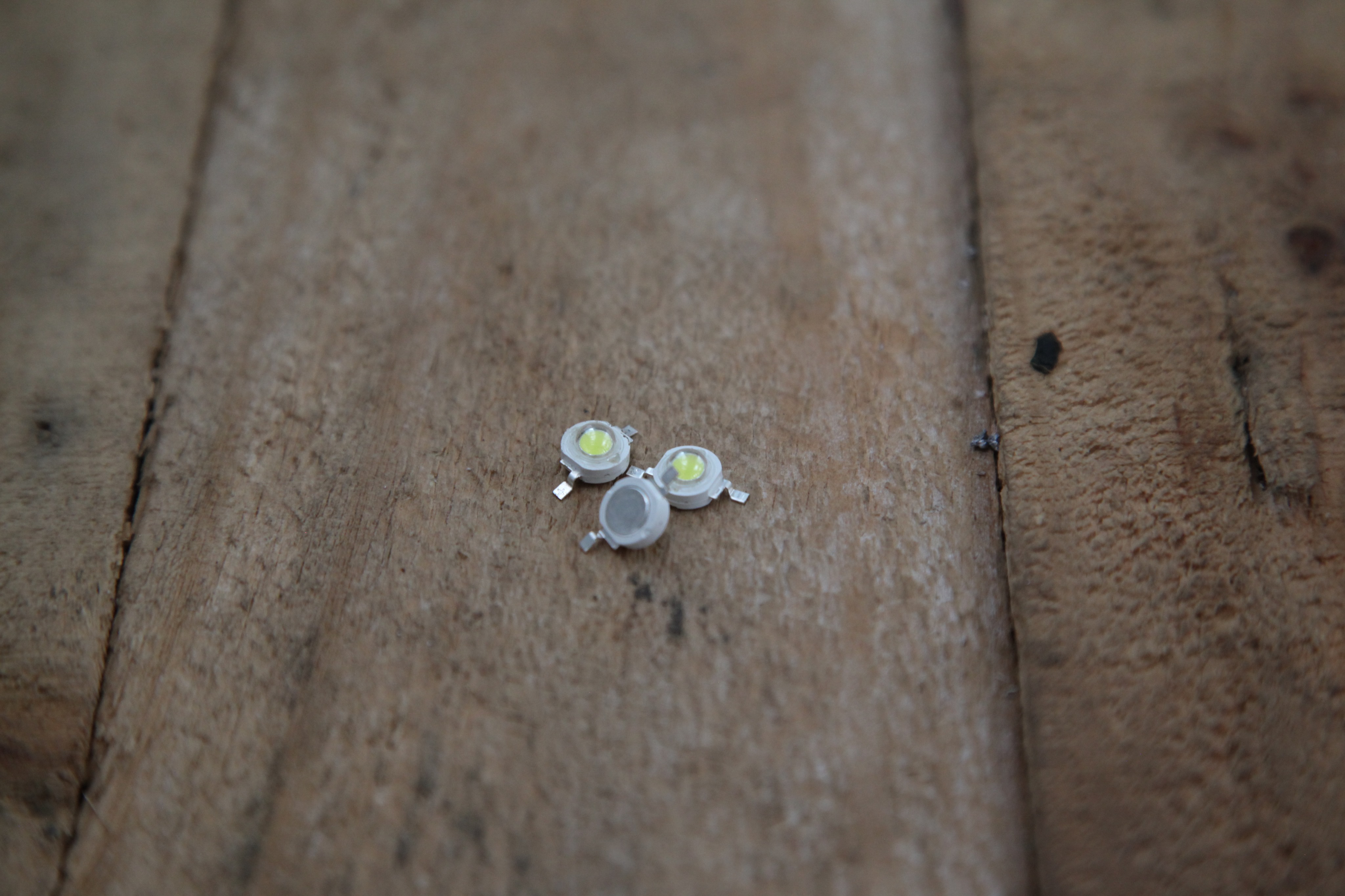
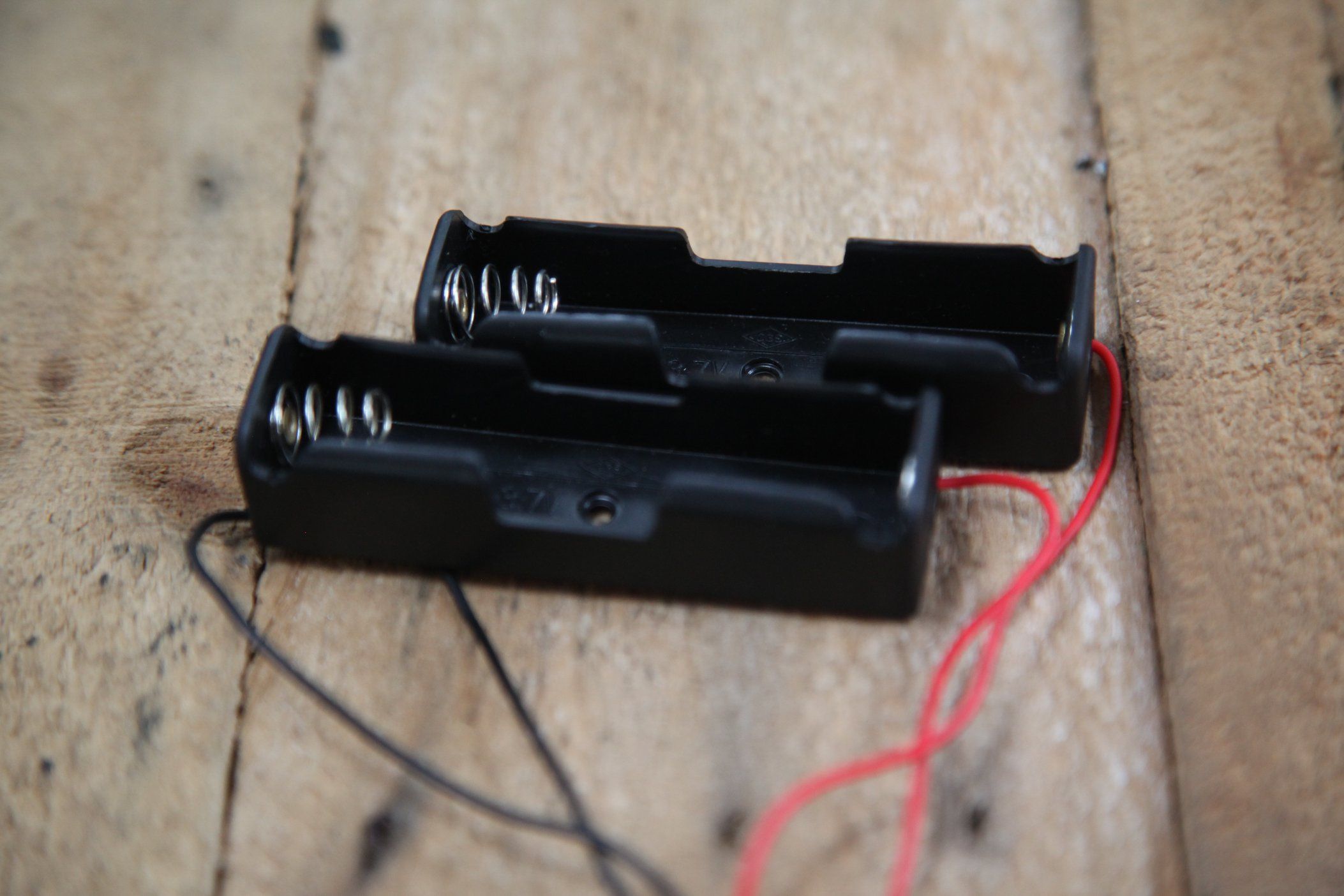
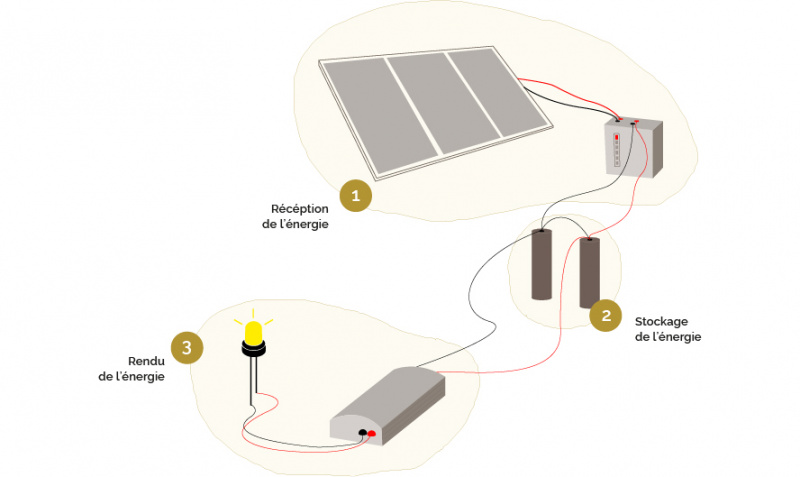
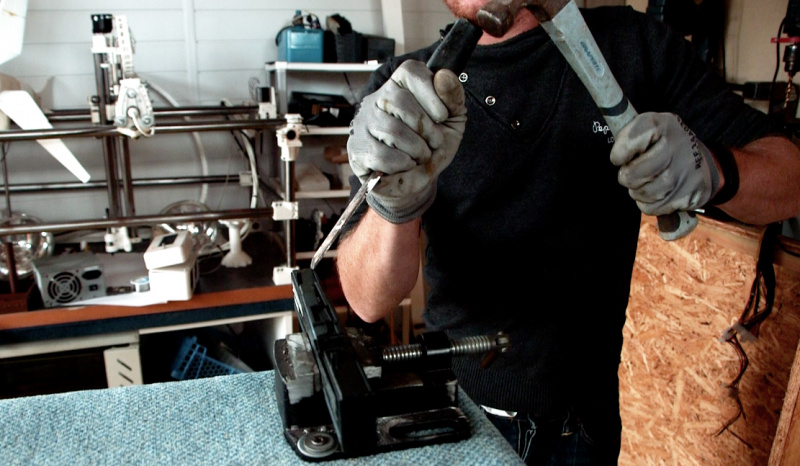
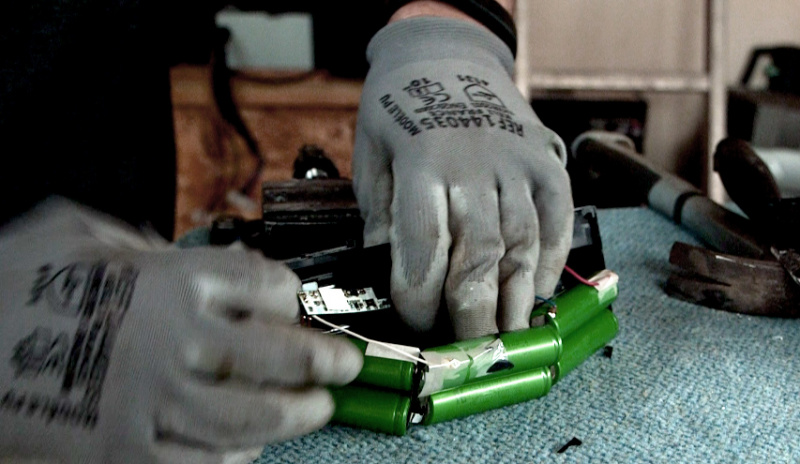
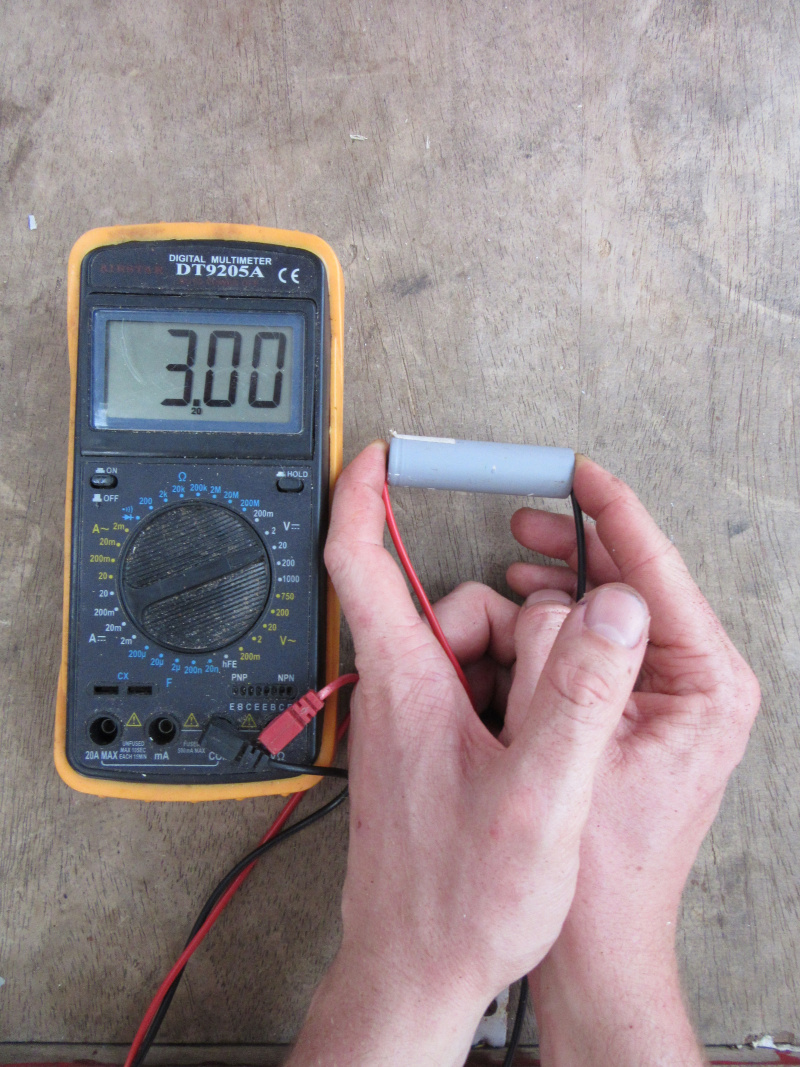
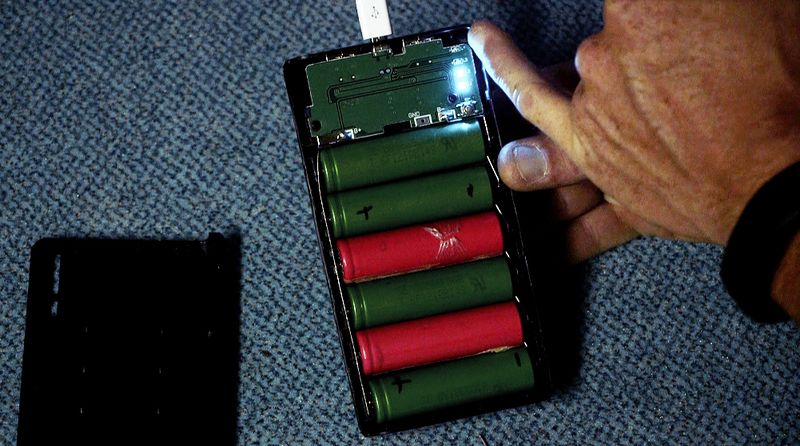
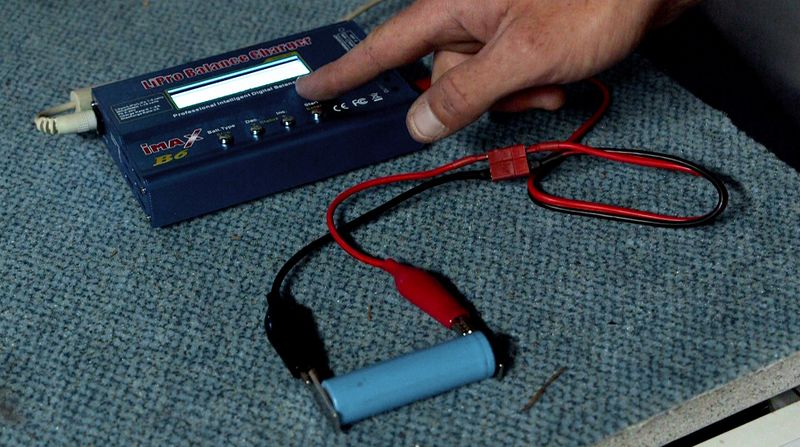
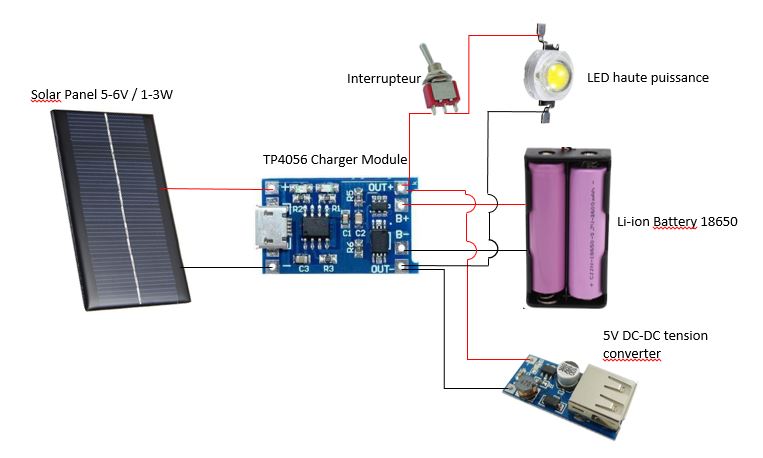
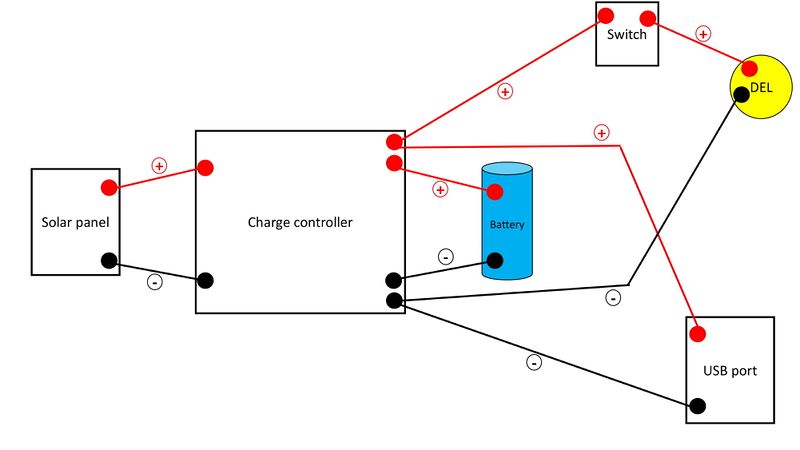
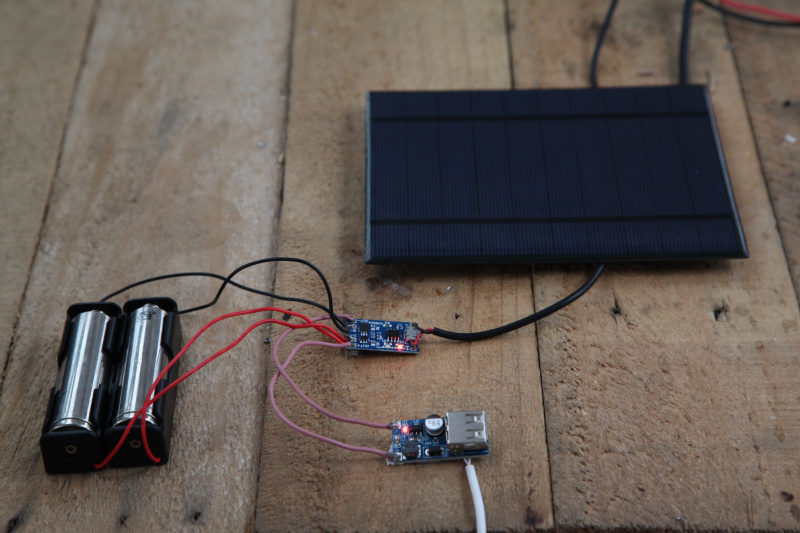
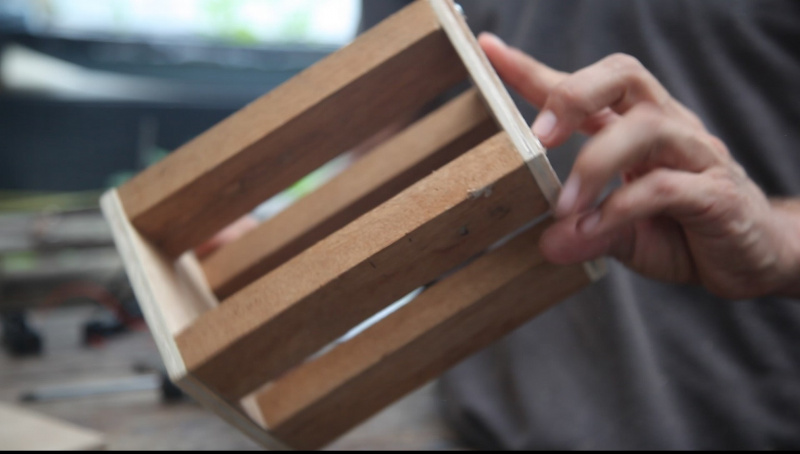
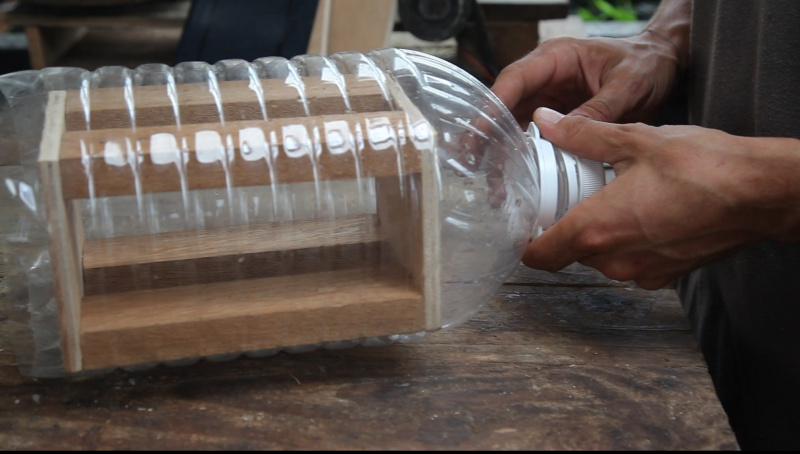
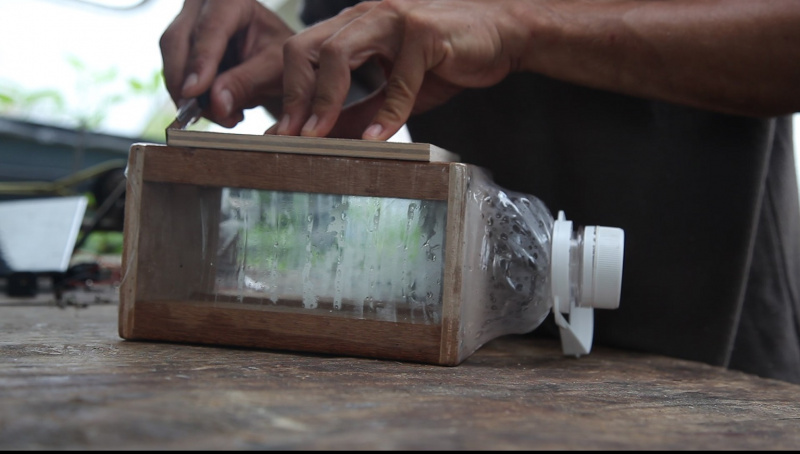
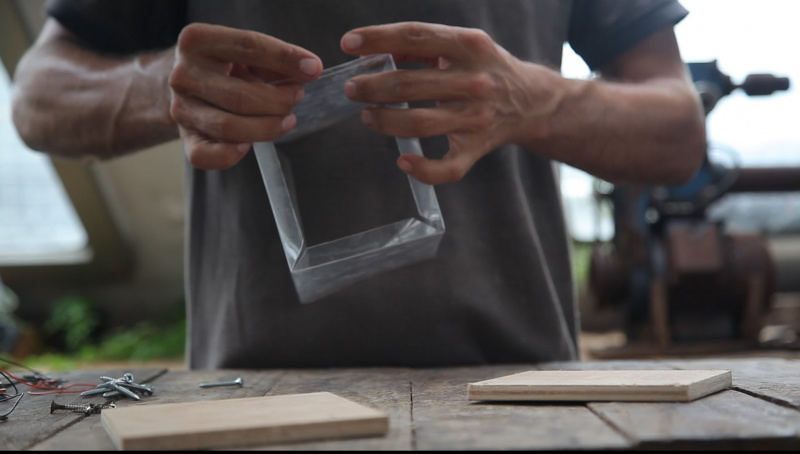
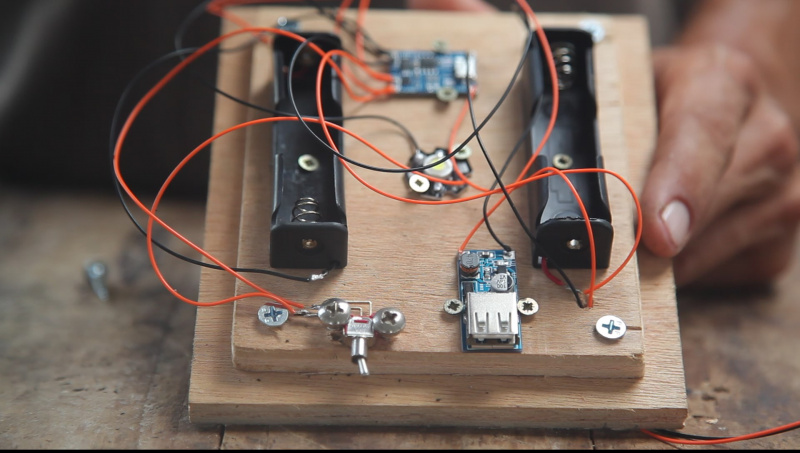
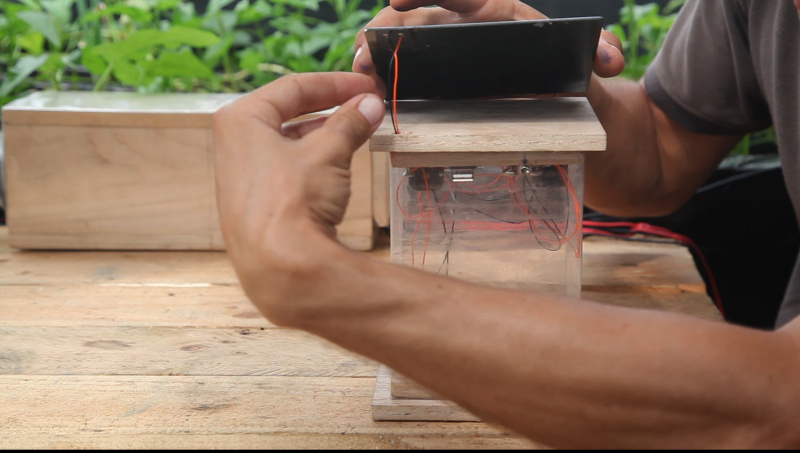
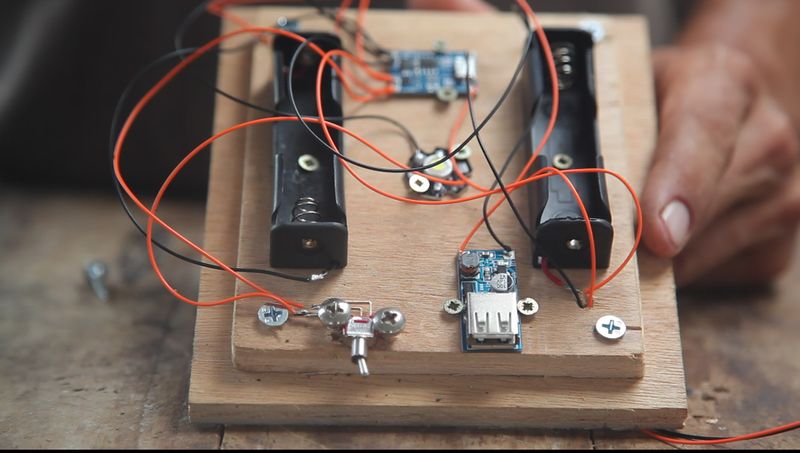
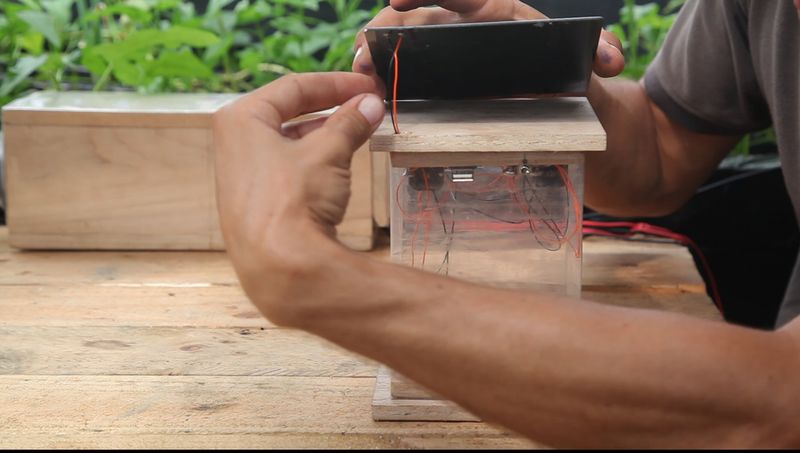
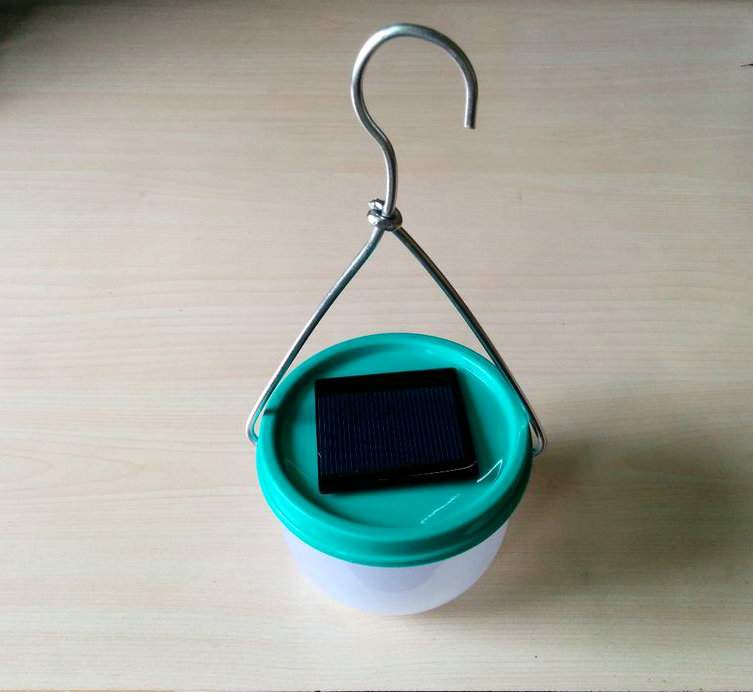
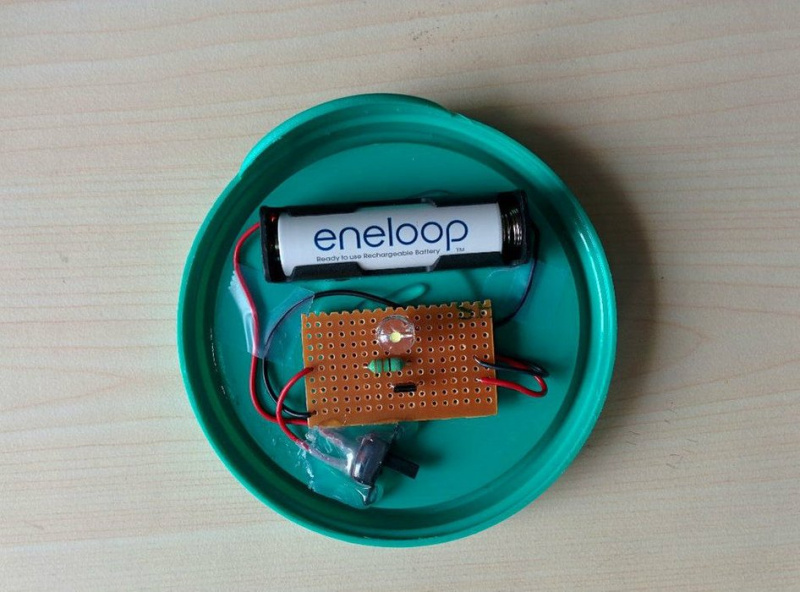
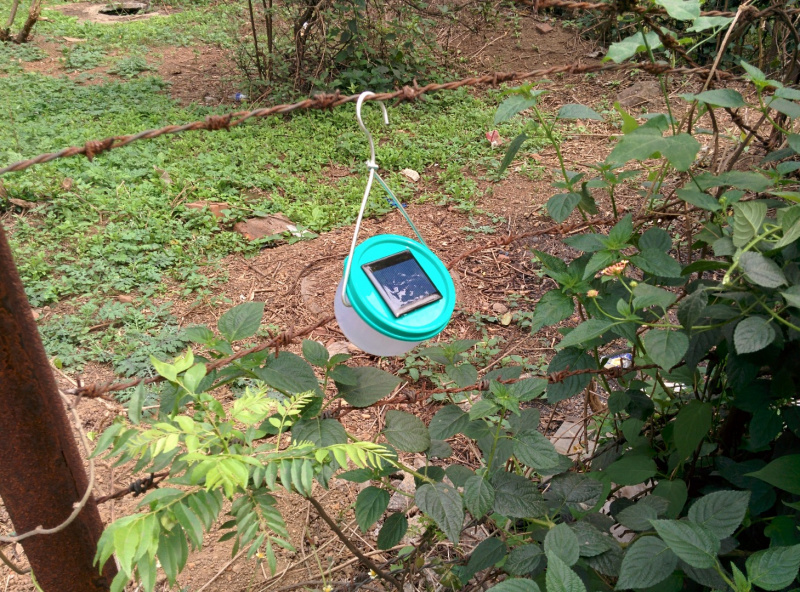
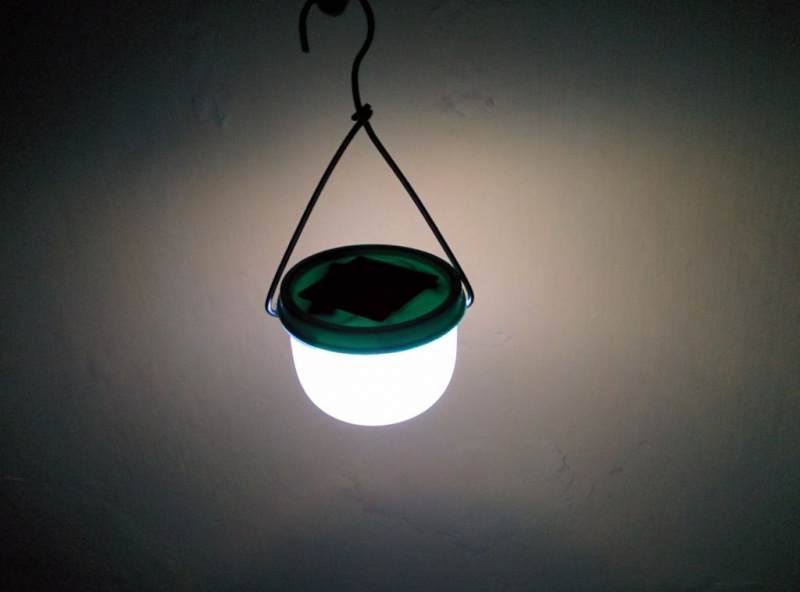


 Français
Français English
English Deutsch
Deutsch Español
Español Italiano
Italiano Português
Português
Hello, thanks for the tutorial, I find that sometimes my batteries are less charged after putting the solar panel in the sun. Could that be because whenever there is not enough light, the current is inverted and goes out of the battery? Would it then be better to have a diode to prevent the current to change direction when the luminosity drops? Or would it be that my panel (5V) is not powerful enough? What's your experience with the setting described above (I think I have the same components)?